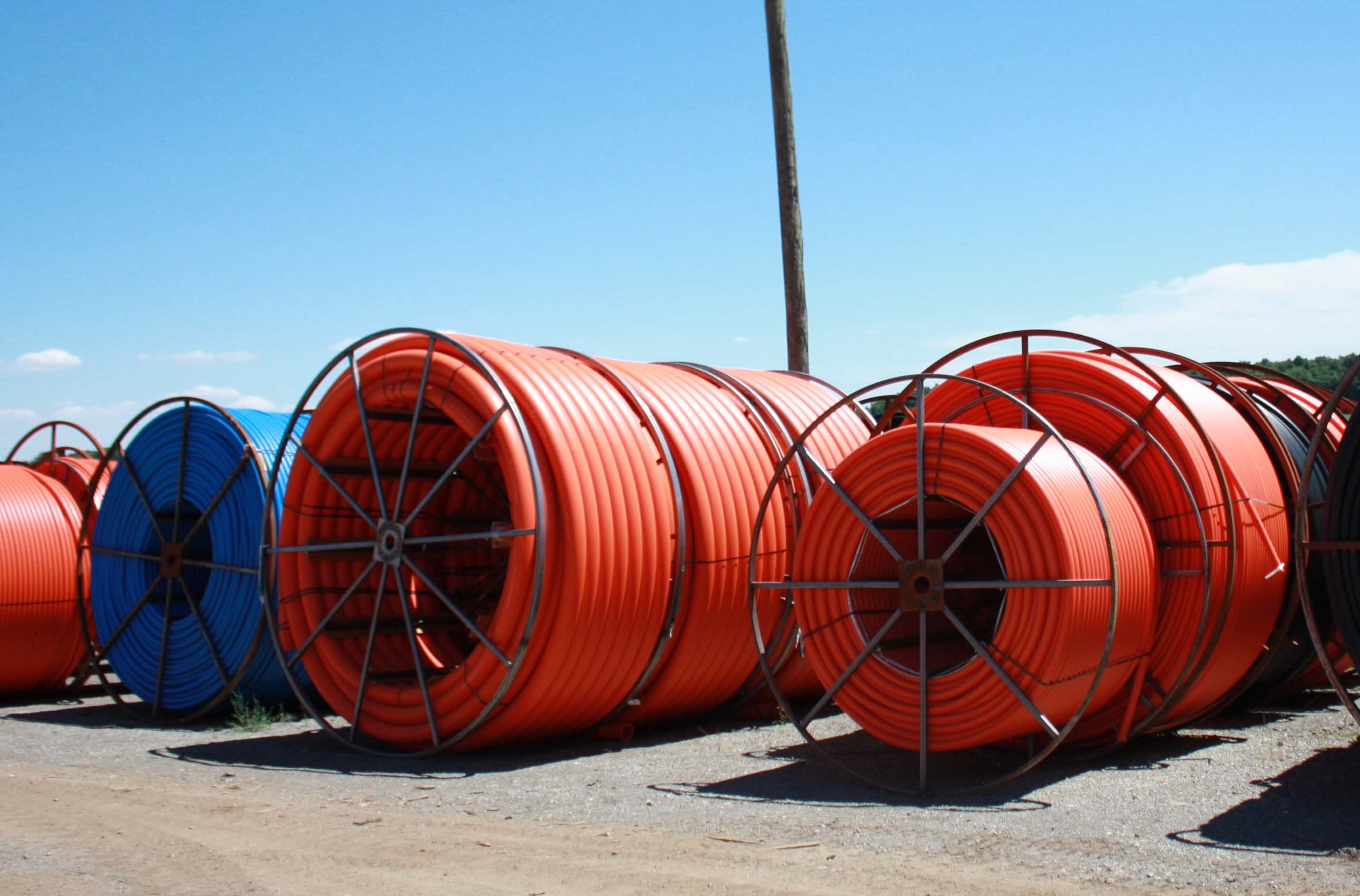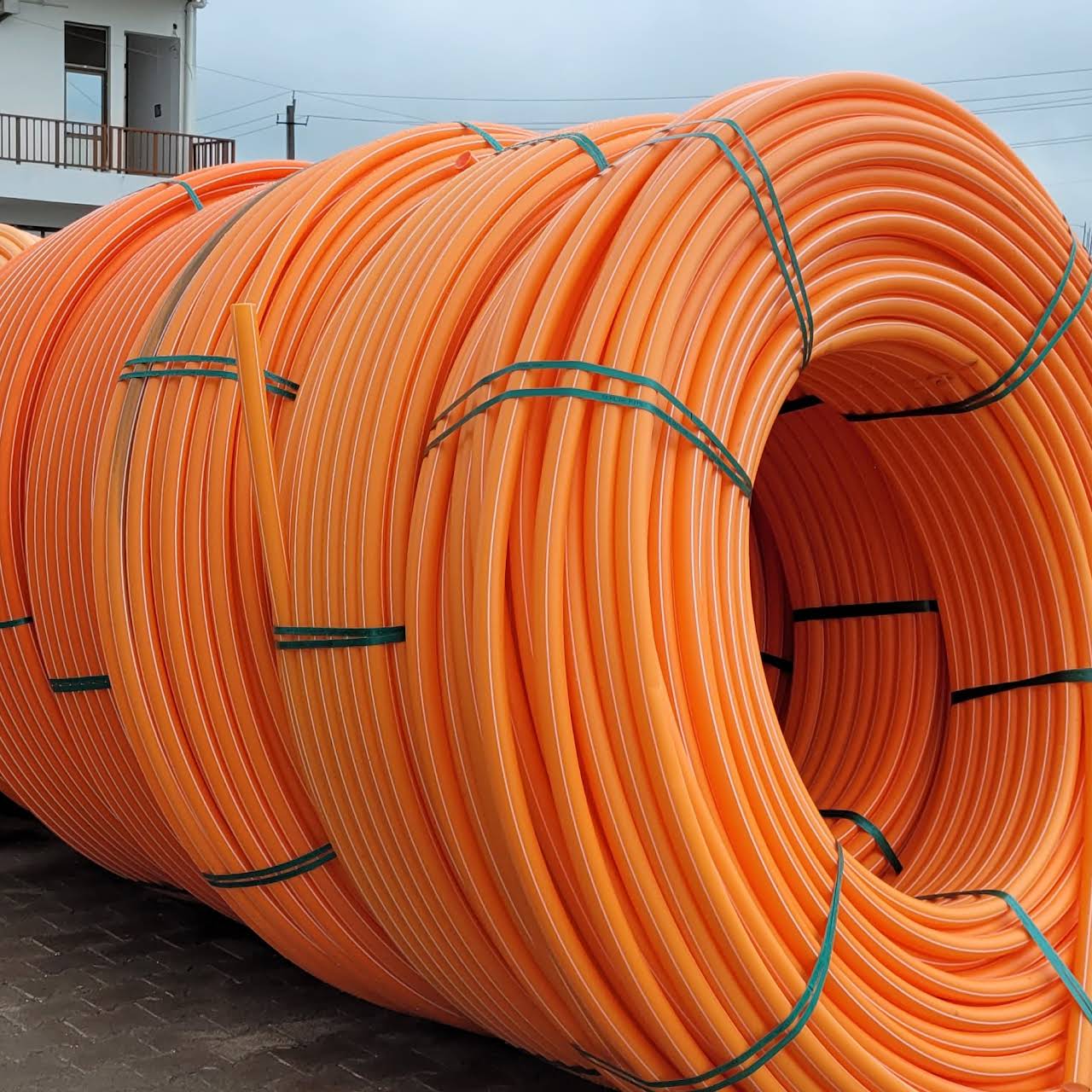American Plastics HDPE Pipe for Oilfield: Strength in Harsh Environments
Wiki Article
Check Out the Manufacturing Refine Behind High-Quality HDPE Pipe and Its Applications
The production process of high-grade HDPE pipes is detailed and methodical. It begins with the choice of raw products that enhance performance. Following this, ethylene undertakes polymerization to create resin, which is then shaped via extrusion. Quality assurance is extremely important, ensuring that the end product satisfies rigorous standards. Nevertheless, the journey of HDPE pipelines does not end with manufacturing. Their applications throughout various industries disclose a broader importance worth taking a look at.Comprehending HDPE: Features and Advantages

High-density polyethylene (HDPE) is a versatile thermoplastic recognized for its sturdiness and resistance to numerous environmental factors. This product exhibits excellent tensile strength, making it appropriate for requiring applications. Its low-density framework contributes to a lightweight item, promoting simplicity of dealing with and installation. HDPE additionally showcases exceptional resistance to chemicals, which lessens destruction when revealed to extreme compounds.
The material's low dampness absorption even more improves its longevity, making it ideal for use in pipelines and storage space containers. In addition, HDPE is immune to ultraviolet (UV) radiation, making certain that items keep their integrity even when exposed to sunshine. Its flexibility allows for the creation of elaborate forms without endangering toughness. The environment-friendly nature of HDPE, commonly obtained from recycled products, adds to its allure, advertising lasting techniques in production. In general, these residential properties and advantages make HDPE a recommended selection for various industrial and consumer applications.
Resources Option for HDPE Production
The selection of basic materials for HDPE production is important to validate the final item meets the preferred specifications and top quality standards. High-density polyethylene (HDPE) is primarily produced from polymerized ethylene, stemmed from nonrenewable fuel sources such as gas or crude oil. The top quality of these feedstocks significantly influences the mechanical and thermal residential properties of the final HDPE.Ingredients likewise play a significant duty in boosting HDPE's performance, consisting of antioxidants, UV stabilizers, and colorants, which boost toughness and resistance to environmental aspects. The option process must think about not only the chemical make-up of the raw products however likewise their handling features to guarantee efficient manufacturing.
The sourcing of raw products must prioritize sustainability and conformity with ecological guidelines, as liable methods are imperative in today's market. Ultimately, cautious raw material option lays the structure for creating top notch HDPE pipes appropriate for diverse applications.
The Extrusion Refine: Shaping HDPE Pipeline
The extrusion procedure plays an essential role in shaping HDPE pipelines, starting with precise material prep work strategies that ensure excellent circulation and uniformity. Similarly vital is the design of the die, which directly affects the final dimensions and surface area high quality of the pipeline. With each other, these factors contribute considerably to the efficiency and top quality of HDPE pipe production.Product Preparation Techniques
Efficient manufacturing of HDPE pipes begins with meticulous material preparation methods, specifically the extrusion procedure. Throughout this phase, high-density polyethylene material is very first dried to get rid of wetness, guaranteeing optimal flow features. The material is then fed right into the extruder, where it undergoes heating and melting, changing right into a thick state. This heating procedure is carefully regulated to maintain the product's stability and performance. The molten HDPE is compelled via a die, shaping it into a continual pipe type. Correct temperature level administration during extrusion is crucial, as it directly affects the product's buildings and the last product quality. As soon as formed, the HDPE pipeline is cooled and cut to specified lengths, prepared for subsequent processing and applications.Die Layout Relevance
Precision in die layout plays an important role in the extrusion process of HDPE pipes. The die works as the final shaping device, directly affecting the pipe's measurements, wall surface thickness, and surface area coating. A properly designed die assurances uniform material flow, reducing problems such as irregularities and vulnerable points. The geometry of the die should be maximized to suit the details properties of HDPE, including its thickness and thermal habits during extrusion. In addition, the cooling price of the product as it travels through the die can substantially influence the pipeline's structural stability. Spending in innovative die technology is important for suppliers aiming to create premium HDPE pipes that satisfy market criteria and client assumptions.Top Quality Control Steps in HDPE Production
Various elements influence the quality of HDPE pipe production, efficient top quality control procedures are essential to guarantee consistency and reliability in the final item (hdpe pipe in stock Midland TX). Key top quality control methods include strenuous material evaluation, verifying that the raw polyethylene satisfies recognized criteria for purity and density. During the extrusion procedure, criteria such as temperature, stress, and cooling time are very closely kept an eye on to keep dimensional accuracy and structural stabilityAdditionally, post-production testing is necessary; suppliers often conduct hydrostatic examinations to assess the pipeline's strength and resistance to stress. Aesthetic examinations for surface issues even more boost quality assurance. Qualification from appropriate standards companies, like ASTM or ISO, offers an additional layer of reliability. By executing these extensive quality control measures, suppliers can reduce flaws, improve performance, and guarantee that the HDPE pipes satisfy the details demands of numerous applications, inevitably resulting in client contentment and count on the product.
Applications of HDPE Pipe Throughout Industries
HDPE pipelines are utilized throughout various fields because of their toughness and versatility. In water distribution systems, they ensure effective distribution, while in wastewater administration, they give trustworthy options for waste transport. Additionally, agricultural watering networks take advantage of HDPE's resistance to corrosion and versatility, making it an ideal option for contemporary farming techniques.
Water Circulation Solutions
A substantial number of markets count on high-density polyethylene (HDPE) pipelines for effective water circulation systems. Understood for their toughness and resistance to rust, HDPE pipes are commonly utilized in municipal supply of water networks, farming irrigation, and industrial applications. Their lightweight nature promotes very easy handling and installment, minimizing labor prices and time. Additionally, HDPE pipes can fit different pressure levels, making them appropriate for both reduced and high-pressure systems. American Plastics HDPE Pipe for Oilfield. The versatility of the material enables smooth integration into existing framework, reducing the demand for comprehensive excavation. Furthermore, HDPE's resistance to chemical leaching assurances that the water supplied continues to be risk-free and tidy, making it an ideal selection for maintaining the top quality of drinkable water throughout numerous fieldsWastewater Administration Solutions
Effective water circulation systems additionally pave the means for innovative wastewater monitoring services, where high-density polyethylene (HDPE) pipes play a substantial role. Popular for their durability and resistance to corrosion, HDPE pipes are perfect for transferring wastewater in numerous settings. Their versatility enables for very easy setup in intricate settings, minimizing the need for substantial excavation. Furthermore, HDPE's smooth indoor surface area minimizes rubbing, boosting circulation prices and efficiency. These pipes are also resistant to chemical leaching, making certain that contaminants do not endanger the surrounding environment. Industries, districts, and treatment facilities progressively depend on HDPE pipelines for their dependability and durability, making them a favored selection for contemporary wastewater administration systems. This flexibility highlights the critical value of HDPE pipes across many applications.Agricultural Watering Networks
Agricultural irrigation networks benefit considerably from the usage of high-density polyethylene (HDPE) pipes, which provide reliable and dependable water delivery to plants. HDPE pipelines are light-weight, making them very easy to transport and install, while their versatility permits numerous setups in diverse terrains. These pipes show exceptional resistance to corrosion, chemicals, and UV radiation, making certain toughness in severe agricultural environments. Additionally, their smooth indoor surface area minimizes rubbing loss, enhancing water circulation and decreasing power expenses linked with pumping. The durability of HDPE pipes, often exceeding 50 years, contributes to lower maintenance and substitute expenses. Consequently, farmers progressively count on HDPE pipes to boost watering performance and promote sustainable farming methods, inevitably resulting in boosted plant returns and source conservation.Future Fads in HDPE Pipe Technology
As the need for sustainable and reliable infrastructure expands, improvements in HDPE pipeline modern technology are positioned to transform numerous industries. Emerging fads consist of the integration of clever modern technologies, such as sensors and IoT capacities, which facilitate real-time tracking of pipe conditions, decreasing upkeep expenses and stopping leakages. In addition, the growth of advanced production methods, such as 3D printing, is allowing the manufacturing of facility, customized pipe styles that cater to certain project requirements.The emphasis on recycling and circular economic climate practices is driving the development of HDPE pipes made from recycled materials, enhancing sustainability. Improved jointing techniques, such as electro-fusion and mechanical installations, are also improving setup effectiveness and reliability. The growing focus on ecological guidelines is pressing producers to adopt greener production processes, ensuring that HDPE pipes not only meet market standards yet additionally cultivate a more lasting future for facilities development.
Frequently Asked Inquiries
How Does HDPE Compare to Various Other Plastic Products?
HDPE surpasses lots of other plastic materials relating to toughness, chemical resistance, and adaptability. Its reduced thickness and high tensile toughness make it optimal for numerous applications, commonly surpassing options in both performance and longevity.What Are the Environmental Influences of HDPE Production?
The ecological influences of HDPE manufacturing include greenhouse gas emissions, power intake, and prospective contamination from manufacturing processes. Furthermore, incorrect disposal can bring about dirt and water contamination, increasing concerns about long-lasting ecological effects.Can HDPE Pipes Be Recycled?
Yes, HDPE pipes can be recycled. Lots of centers approve used HDPE for processing, transforming it into new items. This recycling adds to sustainability initiatives, minimizing plastic waste while preserving sources and power in the production cycle.What Is the Lifespan of HDPE Pipes?

Just How Do Temperature Level Variants Affect HDPE Pipeline Efficiency?
Temperature level variations greatly affect HDPE pipeline efficiency, affecting adaptability and toughness. Heats can bring about softening, more info while reduced temperature levels might create brittleness, eventually influencing the pipe's toughness and suitability for different applications in varied atmospheres.Report this wiki page